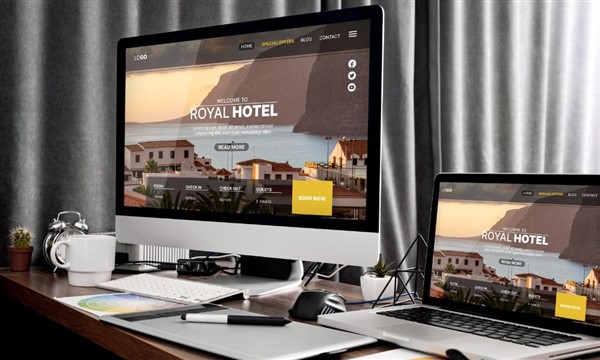Creating A Website With Python England Uk
Are you looking at Creating A Website With Python England Uk? This guide provides a comprehensive overview of how to leverage Python for web development within the United Kingdom, focusing on best practices, frameworks, and deployment strategies tailored for the UK market. We’ll explore everything from choosing the right framework to deploying your application on UK-based servers. The information provided is designed to empower both novice and experienced developers to build high-quality, scalable web applications.
Why Choose Python for Web Development in the UK?

Python has emerged as a leading language for web development due to its simplicity, versatility, and a rich ecosystem of libraries and frameworks. Moreover, the UK tech scene, particularly in cities like London, Manchester, and Bristol, has a strong Python community, offering ample opportunities for collaboration and support. Python’s readability makes it easier to learn and maintain, which is crucial for long-term project success. Therefore, Python is a good choice.
Benefits of Python in UK Web Development
Choosing Python for your web development project in the UK offers several advantages. Firstly, Python’s extensive libraries like Django and Flask significantly reduce development time. Secondly, the UK has a thriving Python community, providing access to skilled developers and ample resources. Lastly, Python’s scalability makes it suitable for projects of all sizes, from small startups to large enterprises. For example, many fintech companies in London use Python for their backend systems.
- Rapid Development: Frameworks like Django and Flask accelerate the development process.
- Large Community: Access to a vast network of developers and resources in the UK.
- Scalability: Python applications can easily scale to handle increasing traffic and data.
- Cost-Effective: Open-source nature reduces licensing costs.
Consider the example of a startup in Shoreditch, London, that built its entire e-commerce platform using Django. The rapid development cycle allowed them to launch their product quickly and gain a competitive edge. Furthermore, the vibrant Python community in London provided invaluable support and expertise.
Python Web Development Frameworks: Django vs. Flask
When embarking on creating a website with Python England Uk, you’ll encounter two primary frameworks: Django and Flask. Django is a high-level framework that provides a full suite of tools and features, including an ORM (Object-Relational Mapper), templating engine, and admin interface. Flask, on the other hand, is a microframework that offers more flexibility and control, allowing you to choose the components you need. Both frameworks are widely used in the UK and have their own strengths and weaknesses.
Django is ideal for complex web applications that require a robust and scalable architecture. Moreover, its built-in security features make it a popular choice for projects that handle sensitive data. Flask is better suited for smaller projects or when you need fine-grained control over the application’s structure. Therefore, choose the framework that best aligns with your project’s requirements.
Setting Up Your Development Environment in the UK

Before you start creating a website with Python England Uk, you need to set up your development environment. This involves installing Python, choosing an IDE (Integrated Development Environment), and setting up a virtual environment. A virtual environment isolates your project’s dependencies, preventing conflicts with other projects. Popular IDEs for Python development include VS Code, PyCharm, and Sublime Text. Setting up a proper environment is crucial for a smooth development process.
Installing Python and Virtual Environment
The first step is to download and install the latest version of Python from the official website. Once Python is installed, you can create a virtual environment using the `venv` module. Open your terminal and navigate to your project directory. Then, run the command `python -m venv venv`. This will create a virtual environment named “venv” in your project directory. To activate the virtual environment, use the command `source venv/bin/activate` on Linux/macOS or `venvScriptsactivate` on Windows.
Using a virtual environment ensures that your project’s dependencies are isolated from the global Python installation. This prevents conflicts and makes it easier to manage your project’s dependencies. For example, if you’re working on multiple projects with different versions of Django, a virtual environment will allow you to keep them separate.
Choosing the Right IDE for Python Development
Selecting the right IDE can significantly enhance your productivity when creating a website with Python England Uk. VS Code is a popular choice due to its lightweight nature, extensive extensions, and excellent support for Python. PyCharm, developed by JetBrains, is a more feature-rich IDE that provides advanced debugging tools, code completion, and refactoring capabilities. Sublime Text is another popular option, known for its speed and customizability. Consider your specific needs and preferences when choosing an IDE.
For instance, if you’re working on a large Django project, PyCharm’s advanced features can be invaluable. However, if you prefer a more lightweight and customizable IDE, VS Code or Sublime Text might be a better fit. Moreover, many developers in London use VS Code with the Python extension for its versatility and ease of use. Therefore, try out different IDEs to find the one that works best for you.
Developing Your Website with Python in the UK

Once your development environment is set up, you can start creating a website with Python England Uk. This involves designing your website’s architecture, creating models, writing views, and designing templates. The specific steps will vary depending on the framework you’re using. However, the fundamental principles remain the same: define your data models, create views to handle user requests, and design templates to render the output.
Designing Your Website’s Architecture
A well-designed architecture is crucial for the scalability and maintainability of your website. Start by defining the different components of your website and how they interact with each other. For example, you might have components for user authentication, data storage, and content management. Use established design patterns, such as Model-View-Controller (MVC), to structure your code. A clear architecture will make it easier to add new features and maintain your website over time. Moreover, consider using a microservices architecture for complex applications.
Consider a case study of a company in Manchester that built a complex web application using a microservices architecture. They divided their application into smaller, independent services, each responsible for a specific task. This allowed them to scale individual components independently and improve the overall resilience of their application. Therefore, a well-designed architecture is essential for success.
Creating Models, Views, and Templates
In a typical Python web application, models define the structure of your data, views handle user requests and interact with the models, and templates render the output. In Django, models are defined using Python classes that inherit from `django.db.models.Model`. Views are Python functions that receive HTTP requests and return HTTP responses. Templates are HTML files that contain placeholders for dynamic content. This separation of concerns makes your code more organized and easier to maintain. Moreover, Django’s ORM simplifies database interactions.
For example, you might have a model for storing user information, a view for handling user registration, and a template for displaying the user profile. The view would retrieve the user data from the model and pass it to the template, which would then render the HTML output. Therefore, understanding the MVC pattern is crucial for Python web development.
Deploying Your Website in the UK
Deploying your website is the final step in creating a website with Python England Uk. This involves choosing a hosting provider, configuring your server, and deploying your code. Several hosting providers in the UK offer excellent support for Python web applications. Popular options include AWS, Google Cloud, and DigitalOcean. Choose a provider that meets your specific needs and budget. Moreover, consider using a PaaS (Platform-as-a-Service) provider like Heroku for simplified deployment.
Choosing a Hosting Provider in the UK
When selecting a hosting provider in the UK, consider factors such as server location, pricing, and support for Python. Opting for a provider with servers located in the UK can improve website performance for UK users. AWS, Google Cloud, and DigitalOcean all have data centers in the UK. Furthermore, consider the level of support offered by the provider. Choose a provider that offers 24/7 support and has experience with Python web applications. Therefore, careful selection is crucial.
For instance, a small business in Bristol might choose DigitalOcean for its affordable pricing and ease of use. A larger enterprise, on the other hand, might opt for AWS or Google Cloud for their scalability and advanced features. Moreover, consider using a CDN (Content Delivery Network) to further improve website performance. Therefore, evaluate your options carefully.
Configuring Your Server and Deploying Your Code
Configuring your server involves installing the necessary software, such as a web server (e.g., Apache or Nginx) and a database server (e.g., PostgreSQL or MySQL). You’ll also need to install Python and any required dependencies. Once your server is configured, you can deploy your code using tools like Git and SSH. Automate the deployment process using tools like Ansible or Chef. Moreover, consider using Docker containers for easier deployment and management. Therefore, automation is key.
For example, you can use Git to push your code to a remote repository and then use Ansible to pull the code onto your server and restart the web server. This process can be automated with a single command. Moreover, using Docker containers ensures that your application runs consistently across different environments. Therefore, invest time in setting up a robust deployment pipeline.
Optimizing Your Website for UK Users
After deploying your website, it’s important to optimize it for UK users. This includes optimizing for search engines, ensuring fast loading times, and providing a good user experience. Consider factors such as local SEO, mobile-friendliness, and accessibility. Moreover, gather feedback from UK users and iterate on your design. Therefore, continuous improvement is essential.
SEO for the UK Market
Search engine optimization (SEO) is crucial for attracting traffic to your website. Optimize your website for keywords that are relevant to the UK market. Use tools like Google Keyword Planner to identify popular search terms. Moreover, focus on local SEO by including location-specific keywords in your content and meta descriptions. Build backlinks from reputable UK websites. Therefore, targeted SEO is crucial.
For instance, if you’re targeting users in London, include keywords like “London,” “Greater London,” and specific neighborhoods like “Shoreditch” or “Notting Hill.” Moreover, create content that is relevant to the UK market, such as articles about local events or news. Therefore, tailor your content to your target audience.
Ensuring Mobile-Friendliness and Accessibility
With the increasing use of mobile devices, it’s essential to ensure that your website is mobile-friendly. Use a responsive design that adapts to different screen sizes. Test your website on various devices and browsers. Moreover, ensure that your website is accessible to users with disabilities. Follow accessibility guidelines, such as the Web Content Accessibility Guidelines (WCAG). Therefore, inclusivity is crucial.
For example, use semantic HTML, provide alt text for images, and ensure that your website is navigable using a keyboard. Moreover, use assistive technologies to test your website’s accessibility. Therefore, prioritize accessibility in your design.
FAQs About Creating A Website With Python England Uk

Q: What are the best Python web frameworks for beginners in the UK?
A: For beginners, Flask is often recommended due to its simplicity and flexibility. It allows you to learn the fundamentals of web development without being overwhelmed by too many features. Django, while more comprehensive, has a steeper learning curve but offers a robust set of tools for larger projects. Both frameworks are widely used in the UK.
Q: How much does it cost to create a website with Python in the UK?
A: The cost varies depending on the complexity of the website, the development team’s experience, and the hosting infrastructure. A simple website can cost a few hundred pounds, while a complex e-commerce platform can cost several thousand. Consider factors such as design, development, hosting, and maintenance costs. Get quotes from multiple developers to compare prices.
Q: What are the common challenges when creating a website with Python in the UK?
A: Common challenges include finding skilled Python developers, choosing the right framework, and ensuring scalability and security. Moreover, navigating UK data protection regulations can be complex. Plan your project carefully, choose the right tools, and seek expert advice when needed. Moreover, consider using a local development team for better understanding of the UK market.
Q: How can I find Python developers in England, UK?
A: You can find Python developers through online job boards like Indeed and LinkedIn, or through specialized recruitment agencies that focus on tech roles in the UK. Networking at local Python meetups and conferences can also be a great way to connect with potential developers. Additionally, consider freelance platforms like Upwork.
Q: What are some successful examples of websites built with Python in the UK?
A: Many UK-based companies use Python for their web applications. For example, companies in the fintech sector often use Python for their backend systems due to its scalability and security features. Numerous startups in London’s tech hub also rely on Python for their web development needs. Research successful UK companies that use Python to gain inspiration.
We hope this guide has provided you with a comprehensive overview of creating a website with Python England Uk. Remember to plan carefully, choose the right tools, and continuously optimize your website for UK users. Good luck!
For more information on our web development services, please visit our services page. Contact us here for a free consultation.

